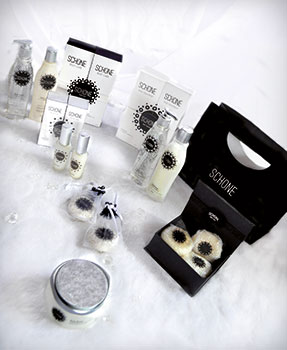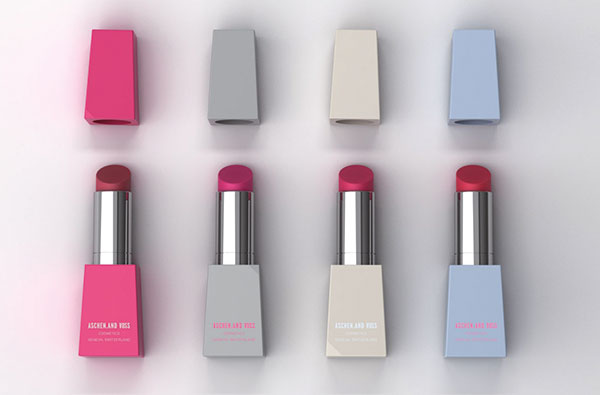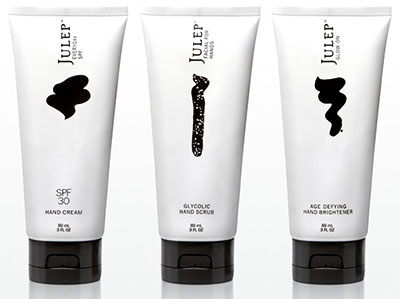Packaging, imagined and produced
New paradigms People who think of people, who design a product capable of entering the life of each and anyone of us, and aboveall, capable of remaining there. The new frontier of the cosmetics market is “sharing”: the sharing of a dream - that illuminates many personal “I-worlds” - but also, first and foremost, the sharing of competency and culture, in order to multiply the potentialities that technology is capable of offering.
On this count we propose the opinion of Andrea Sommavilla (quality control expert of an important cosmetics company ) on the specific role of developing packaging in the field of cosmetics and some reflections on the scenario
By Luciana Guidotti


What does developing packaging for the cosmetic market entail today, suspended by its very nature between the concreteness of the products and immaterial drives?
In the cosmetics sector “innovating” is only possible if the function of packaging development is capable of splitting itself in two: almost two distinct bodies, that though require the expression of characteristics and potentialities in equal measure.
The “first body”, the more rational one, is given the task of thinking of the development of a cosmetic product, considering the materials of which the packaging is made of. They will have to respect the functional aesthetic and technical requisites that will have to satisfy a number of subjects along the path the product must take before reaching the shelves.
And, in this first case, the main purpose is that of ensuring the required performance to also guarantee the final consumer the functional and aesthetic characteristics he or she expects.
Every day we find ourselves having to face the speed of the change and to approach the various contexts in which he cosmetic product is conceived, developed, manufactured, distributed and lastly, purchased. The result of our work has to satisfy in an ever more effective manner a reality made up of highly dynamic and evermore demanding consumers, that make the industrial process complex and articulate.
And here we get to the “second body”, that of an open, generous, patient person who is enthusiastic about life… With a spirit that cannot live without the stimuli and the dynamics that whip up the emotions at such a speed as to often involve many persons close by. It is this second spirit that has to act as the “sentinel” of change.

Innovating in this context is no simple matter…
The dynamics of change need to be monitored because it is the reality that we cannot subtract ourselves from and that often guides us in creating forms of cosmetics evermore respondent to new needs, that in turn change continuously.
Innovating within this context is certainly complex but absolutely necessary!
The objective is all the more difficult because it imposes the creation of packaging capable of ensuring the protection of the product and, at the same time, enables its efficient consumption throughout its entire lifecycle.
The consumer must be able to purchase and use the cosmetic product without the functional properties of the packaging losing their efficiency, neither may the aesthetic characteristics be impaired in any way due to agents inside or outside the pack. Given though the expectation are often also linked to a need for emotional fulfilment, that is satisfied by a product the packaging of which can be seen to be functional vehicle of a series of other elements that constitute the same - its scent, color, the sensorial perception of the materials, size and shape, the way it is presented… - being but some of the same, albeit it is the sum of all these things that trigger the purchasing impulse.
Concretely, these characteristics are the happy union of a combination of chemical substances and materials that, functionally, combine in achieving the product as it is seen on the shelf.

How much does industrial and manufacturing logic affect the development of packaging?
The innovation in this sense only becomes concrete only if one has the capacity to fit the entire company and manufacturing system within the “two bodies” described above. An integration that also goes by way of the involvement of all the partners that contribute to creating the product, inside and outside the company.
Concerning outside partners, I refer to the packaging producers, the cosmetic product manufacturers, the people that distribute and sell it. It is a potential that can express great energy, if involved in a dialogue that enables the full comprehension and sharing of the product requisites.
Because comprehending the needs will enable each one to effectively carry out their own work.
Facilitating the exchange between the various actors will consequently favour the creation of products ever more respondent to the demands of the consumers.
In other terms the sharing of the competencies and all the information on the materials or on the manufacturing process will be evermore the key to overcoming any criticalities, extending the sector knowhow.
We have to aim at promoting the culture of sharing within the company system; and thanks to this new culture we will be able to multiply the potential that the technology is already capable of offering us today, the techniques, the procedures, the talents, the gestures… it is by way of action of mutual exchange, that this culture will be able to enter our homes through these products.

|
From B2C to P2P
In the collective imagination the concept of innovation is linked to the new technologies, to the constantly growing relations with the social media, to mindful saving that goes beyond the consumer’s wallet to all that surrounds us, to the question of being “green” and - last but always so - to the proposal of a new language, represented not only by a collection of experimental words but by a true and proper universe comprising gestures, colors and attitudes, all rigorously “cool”. Happily connected up. It is a concept that one might define as the first person singular “I-world”, with ones own profile, an interminable string of objects, photos, references to actors, singers, writers, associations and gestures that we have “liked”, photos of friends and perfect strangers, reminiscences that up to yesterday we would have jealously hoarded in an extremely personal trunk in the attic, or even forgotten under a thick layer of dust and cobwebs, and that now, accepting with enthusiasm the generous offer of Mr. Zuckerberg, we throw open to the web, and while we are at it, we also add the spider asleep on the trunk to our profile. Today though everything finds its maximum form of expression in the permanent link that we have built within a “social” network, comprised of an ever growing number of first person singular “I-worlds”, all with their profile, all with their ever growing extension of rigorously virtual friendships, that is today in actual fact the extension of rigorously physical loneliness, totally devoid of touch and projected into those alter egos that have hypnotized them, convincing them that this is their life, that these are the true first person singular “I s”. Products for “ever”. It is relatively simple to convince a consumer to try out a product for the first time: there are the stars of the 15 minutes of fame (in full Andy Warhol style) that use the same, incessant advertising, the idea of an exciting experience even if we are dealing with soap powder or dental floss… Not to belittle matters, far from it. Choices and mysteries revealed. There is no foregone solution that might help us fully understand why a person acts in this way, and hence right from the start help us define the traits that a product must have to achieve the same; there are no secret formulas or marketing strategies that can be applied, these certainly help and go to constitute a good 90% of the probability of final success, but the 10% at any rate always remains in that shared and up-until-that-moment-in-time inexplicable dream. To render the context even more complex there are then those factors in some way external to the single individual, but that originate from and are fed by the collectivity. |




















